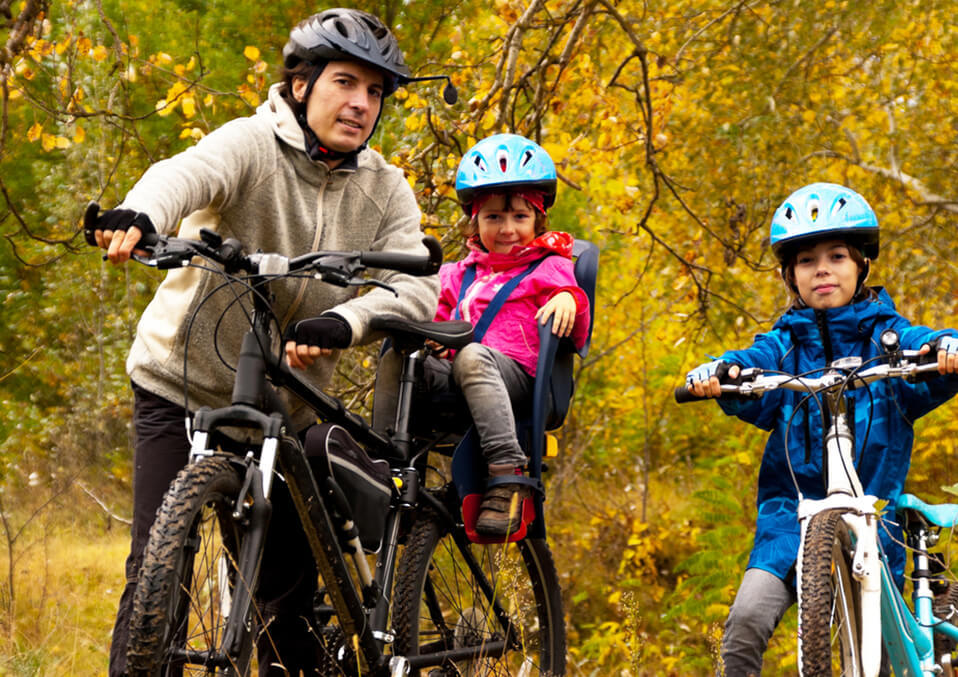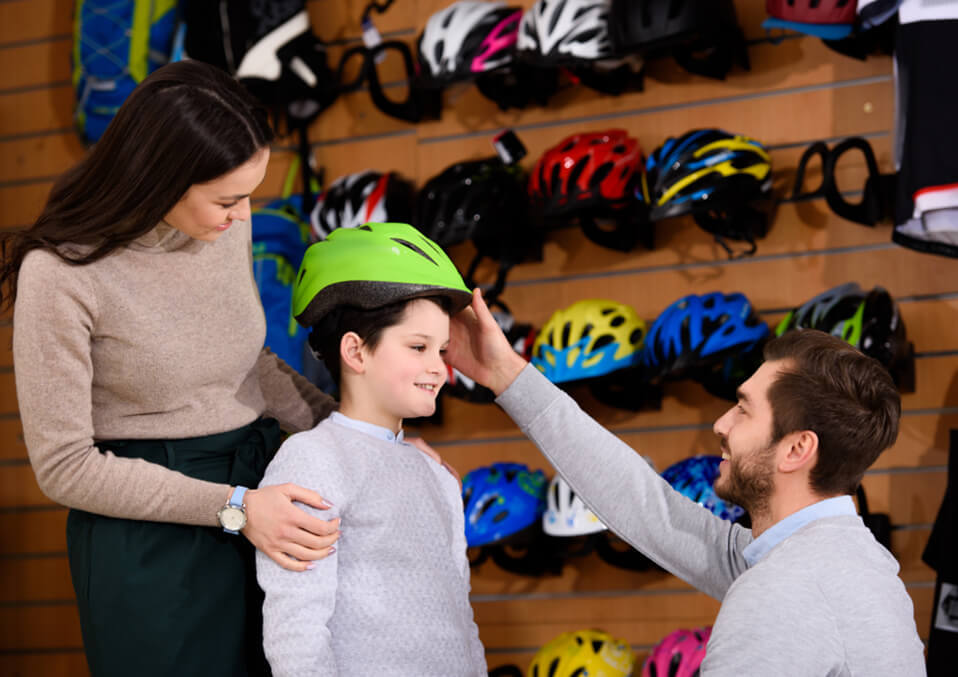
We often see hard hats worn in the workplace in construction sites and industrial areas. A hard hat is a type of helmet and it aims to protect the head from falling objects, from impact, from the debris and other work-related hazards.
Although it may look different from hard hats, kids’ helmet when worn have the same purpose – to protect kids’ head from injuries.
Helmets can be used in sports, like what a jockey wear in horse racing. One who plays football, ice hockey, baseball, hurling and rock climbing also wears a helmet. Wheeled sports like in-line skating, skateboarding and motorcycling also require its player to wear helmets. Even the simple scooter users should wear safety helmets.
And as early as a child learn to ride a bike, parents should provide him every protective gear that he needs, and that includes a helmet. Biking is one hobby that a kid will truly enjoy. It brings a child a sense of independence at an early age. It can take him to different places. In the United States alone, about half a million kids get seriously injured every year due to bicycle-related accidents. Falls from a bike may lead to potential dangers like fractures and head injury. But head injuries can be reduced by 85% and brain injuries by 88% if they wore proper helmets. Sad to say, some underestimate the importance of helmets or the proper use of it for safety.
How to make a child wear a helmet?

Teaching by example: To make a kid wear a helmet, parents should be the first ones to wear helmets. Encourage your child to wear a helmet even if he is a passenger at the back of the bike or motorcycle driver. Parents should also do the same. It should be established to a child that wearing a helmet is a lifetime practice every time he will ride a bike. Not because some of his friends are not wearing one, that makes it correct.
Set a “no helmet, no ride” policy. It will instill in them the importance of helmets.
You can show photos or videos of famous sports celebrities and cycling enthusiasts, and even other kids who use and wear helmets.
Also, let your child participate in choosing and buying a helmet that fits him. He will love to wear one which he chooses. Today, many designs are available that are stylish and appealing to kids without sacrificing comfort and safety.
Injuries can occur anytime and anywhere. No one can predict a fall from a bike so it is better to be protected always, especially the head.
Things to consider in choosing a helmet

Not all helmets are created equal. Selecting a good helmet for the kids is not limited based on lovable colors or design. There are more important things that matter when choosing one that is best to protect a kid’s head.
Size: It is always a must to try a helmet when buying one. Helmets are not free-size. It should not move when worn properly at the top of the head. You can use sizing pads or adjust the universal fit ring if there is any for a more proper fit.
The basic is measuring your kid’s head circumference using a soft tape measure. Measurement should be done an inch above his eyebrow. It is said to be the thickest part of the head. Some helmets provide numbers as their sizes. But manufacturers’ sizes vary. Better to tag your kids along while purchasing for them.
Helmet of a perfect fit makes your kid’s eyebrow move from side to side when rotated. If it slides, the helmet might be big or straps are not properly adjusted.
Read also: High visibility vest and its role on childrens safety
Position: The helmet should fit low on your child’s forehead. To check on this, when the helmet is worn, from your child’s eyebrow to the helmet, there should be one or two finger-widths. A child should see the front rim of the bike helmet on the head when he looks upward.
Adjustability: Chinstrap should snugly fit when buckled. Not too tight, not too loose. Only one finger should fit under the buckled strap. As a guide, it should be tight enough if the kid opens his mouth. Meanwhile, the side strap should form a letter “v” right below the ear. The little rubber band should be rolled to prevent slipping. Make the necessary adjustment for a secure fit. Buckles should also be secured.
Certification: Choose one that is approved by a safety commission in your country. To understand the importance of helmets, the US government set a rule that all helmets should pass the standards set by the Consumer Product Safety Commission. All approved helmets bear the sticker of the commission. There is even classification to make it easier to choose a helmet depending on a child’s age. But still, it is considered safe if worn, adjusted and fastened properly.
Vents: These help to make the head cool and not sweaty under the helmet.
Visor: gives added protection from the sun. See to it that it doesn’t block the child’s vision.
Precautions
Don’t wear a hat or a cap under a helmet.
Take care of the helmet and make sure that it is always in good condition. A helmet that has crashed or dropped into hard surfaces like concrete should also be replaced as it will not give the right protection for a child’s head.
Replace a helmet once the kid has outgrown its size.
Read also: Safeguarding your kids in the road
Put reflective stickers on the helmet especially when biking in the dark.
Be familiar with road signs and safety precautions among pedestrians too.
Encourage your child to make it a habit to wear a helmet every time he rides his bike, no matter how long or how short the drive will be. Check and double-check to make sure that all the straps are properly fastened. Accidents can happen anytime, and it is better to be always prepared. Helmets may not prevent road accidents, but it will lessen the injuries that one may get. In addition to a helmet, protective gear should also be worn like knee and elbow pads, gloves and wrist guards. Take the necessary precautions while on the road.
Have a safe trip!
Read also:
- High Visibility Vest and its Role on Children’s Safety
- The Hazards in Blizzards and How to Keep Your Child Safe
- Names of Sports Little Kids Might Play: a Step to Physical Activity


